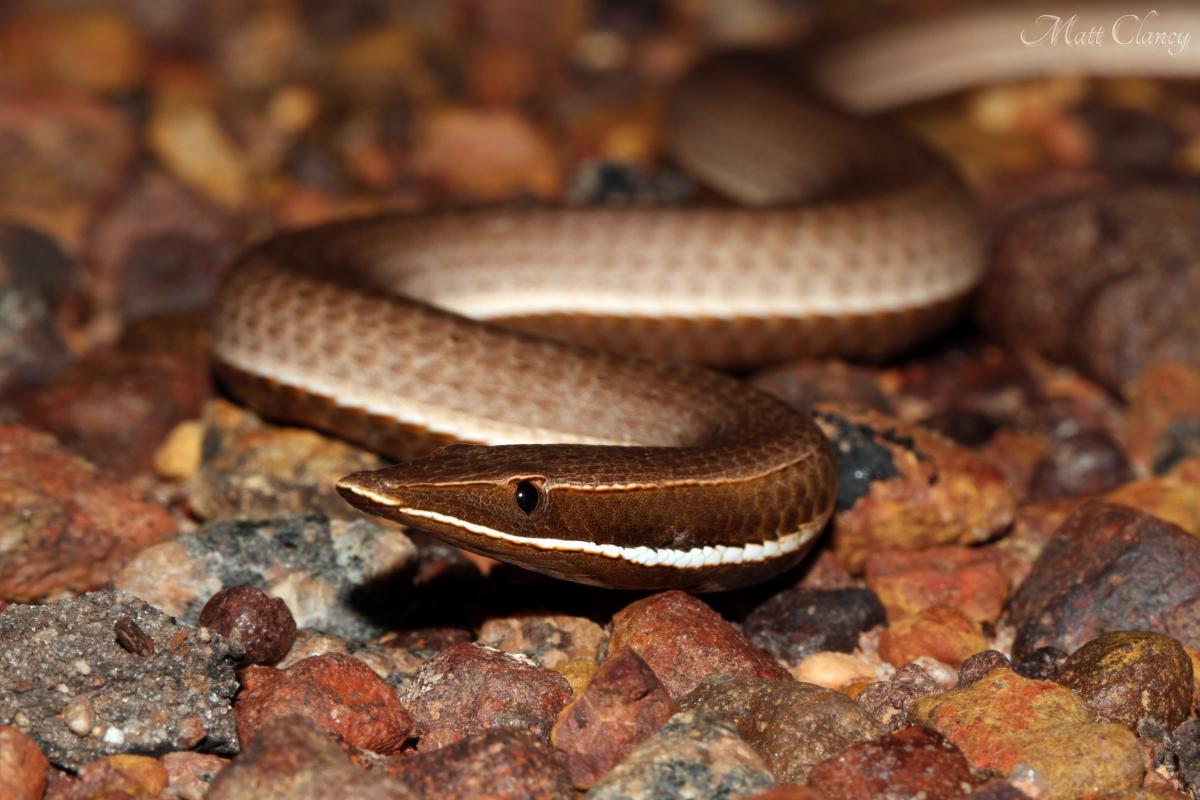This week, I’m attending the seventh annual Think Evolution Institute at UC Berkeley. It’s a week that mixes three of my favorite things: educators, evolution, and the crew behind Understanding Evolution and Understanding Science. Knowing I’d be otherwise engaged all week, I wrote my posts on the clade-formerly-known-as-Edentata in advance. Just as I was congratulating myself for my forethought, major paleontology news struck. So, here I am, well after my bedtime, writing for the blog. It’s all for you, readers.
 What is the major paleontology news? Tetrapodophis amplectus. And what, exactly, is Tetrapodophis amplectus? Well, that’s the million-dollar question. If you ask some scientists, including David Martill, lead author of the Science piece describing it, Tetrapodophis amplectus is a snake—but not just any snake. It’s a snake with four limbs. In case that description doesn't blow your mind, let me assure you that a snake with four limbs—if that’s what it is—would be an incredibly significant find and would instantly become an iconic transitional species along the lines of Tiktaalik, Ambulocetus, and Archaeopteryx. (Martill that described T. amplectus as “the Archaeopteryx of the squamate world” [squamates are lizards and snakes], hence the title of this post.)
What is the major paleontology news? Tetrapodophis amplectus. And what, exactly, is Tetrapodophis amplectus? Well, that’s the million-dollar question. If you ask some scientists, including David Martill, lead author of the Science piece describing it, Tetrapodophis amplectus is a snake—but not just any snake. It’s a snake with four limbs. In case that description doesn't blow your mind, let me assure you that a snake with four limbs—if that’s what it is—would be an incredibly significant find and would instantly become an iconic transitional species along the lines of Tiktaalik, Ambulocetus, and Archaeopteryx. (Martill that described T. amplectus as “the Archaeopteryx of the squamate world” [squamates are lizards and snakes], hence the title of this post.)
 The origin of snakes has been a point of contention with two major camps—the evolved-in-the-water camp and the evolved-on-land camp. There is some indirect evidence in support of both hypotheses, but there hasn’t been—until now, possibly—a smoking gun fossil found that settles the debate. Tetrapodophis amplectus, with its agile hands and feet, certainly points to a terrestrial origin of snakes—that is, it would if it were a snake.
The origin of snakes has been a point of contention with two major camps—the evolved-in-the-water camp and the evolved-on-land camp. There is some indirect evidence in support of both hypotheses, but there hasn’t been—until now, possibly—a smoking gun fossil found that settles the debate. Tetrapodophis amplectus, with its agile hands and feet, certainly points to a terrestrial origin of snakes—that is, it would if it were a snake.
And the jury is still out on that basic fact. Among the doubters is Michael Caldwell, who points to certain snake characteristics that T. amplectus lacks. His conclusion? “I think the specimen is important, but I do not know what it is.” Supporting his skepticism is the fact that while a long serpentine body certainly evolved in the snake lineage, it also evolved at least twenty-five other times among squamates. It could be that T. amplectus represents a new form in one of those other twenty-five lineages, or it could be evidence for a twenty-sixth evolution of a serpentine body form evolving among non-snake squamates. Figuring this all out is made  more difficult by the fact that even though the body of the animal is beautifully preserved, the skull of this critter is a poorly preserved mess. Unfortunately, some of the definitive “I’m a snake!” characteristics (also known as synapomorphies if you’re feeling jargony) are found in the skull, making a definitive classification tricky.
more difficult by the fact that even though the body of the animal is beautifully preserved, the skull of this critter is a poorly preserved mess. Unfortunately, some of the definitive “I’m a snake!” characteristics (also known as synapomorphies if you’re feeling jargony) are found in the skull, making a definitive classification tricky.
T. amplectus does certainly have many of these “I’m a snake!” characteristics, including backwards pointing teeth (all the better to hold on to struggling prey) and 150+ chest vertebrae followed by shorter sections of back and tail vertebrae. So which is more important? The snake characteristics that T. amplectus shares or the snake characteristics it lacks? I do not know—but I have no doubt that T. amplectus will be studied with the greatest scrutiny in the coming months and perhaps we will gain a clearer picture of what it represents.
But. There’re more to this (critter with a long) tale.
 Have you noticed that I haven’t told you where T. amplectus was found or how old it is? You know why I haven’t done that? Because we don’t know—and that’s a big problem, one that will, I think, keep it from being the next Tiktaalik, Ambulocetus, or Archaeopteryx. Martill “discovered” T. amplectus at the Bürgermeister Müller Museum in Solnhofen, Germany where it was labeled simply, “Unknown fossil.” That’s it. Based on the color of the fossil itself and composition of the limestone within which the fossil was preserved, Martill inferred that it came from a particular area of northeastern in Brazil, which would make it around 120 million years old. (Pop Quiz! Why can’t we just date the limestone? If you can’t remember, go back and read this post.)
Have you noticed that I haven’t told you where T. amplectus was found or how old it is? You know why I haven’t done that? Because we don’t know—and that’s a big problem, one that will, I think, keep it from being the next Tiktaalik, Ambulocetus, or Archaeopteryx. Martill “discovered” T. amplectus at the Bürgermeister Müller Museum in Solnhofen, Germany where it was labeled simply, “Unknown fossil.” That’s it. Based on the color of the fossil itself and composition of the limestone within which the fossil was preserved, Martill inferred that it came from a particular area of northeastern in Brazil, which would make it around 120 million years old. (Pop Quiz! Why can’t we just date the limestone? If you can’t remember, go back and read this post.)
But is that age right? Was it found in Brazil? And who found it? And how did it come to be at the museum? We don’t know. Martill, for one, doesn’t think it’s a problem. “Personally I don’t care a damn how the fossil came from Brazil or when”—but he should. If we can’t be sure of the fossil’s provenance, all conclusions based on it are tainted—not just because it was likely obtained illegally (it’s been illegal to export Brazilian fossils since 1946), but also because we will never be sure of its age or locality. Think about this: Would the 375-million-year-old Tiktaalik have been as revolutionary if it were even just fifteen million years younger? (Nope. Far more tetrapod-like organisms existed by then.) How would our understanding of human evolution be different if Homo habilis fossils were found in Europe? (It would mean that human migrations out of Africa began much earlier than we thought.) The point is, the where and when of fossils are important, and until these blanks can be filled in, T. amplectus will be more a frustration than a game-changer.
Are you a teacher and want to tell us about an amazing free resource? Do you have an idea for a Misconception Monday or other type of post? See some good or bad examples of science communication lately? Drop me an email or shoot me a tweet @keeps3.

